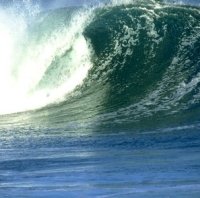 On the first day of EnergyOcean International 2011, it seems the prevailing theme was that while ocean energy holds many promising possibilities, cost is still a main concern among industry experts. Dr. Christopher G. Hart, Offshore Wind Manager at the Department of Energy, delivered a hopeful keynote to conference attendees. “We are excited at the DOE to find cost optimum systems and possibilities that deepwater offshore presents,” he said.
On the first day of EnergyOcean International 2011, it seems the prevailing theme was that while ocean energy holds many promising possibilities, cost is still a main concern among industry experts. Dr. Christopher G. Hart, Offshore Wind Manager at the Department of Energy, delivered a hopeful keynote to conference attendees. “We are excited at the DOE to find cost optimum systems and possibilities that deepwater offshore presents,” he said.
In order to achieve success, Hart believes that small developments in the industry will transition to larger international utilities, which will then attract long-term investors. The key to this process is educating financiers to make them realize that technology is more developed than they currently believe. He explained that the industry is working tirelessly to reduce financial risk, and that companies need to, “get their technology out there.”
Offshore wind is a big topic at this years conference and the University of Maine’s DeepCwind project, funded by the DOE, was highlighted immediately after Hart’s address. Maine set a goal to have 5 GW of floating offshore wind by 2030. Researchers on the project have compiled over nine years of data, and determined that far offshore wind (42-56 miles) creates 33% more energy than nearshore (6-13 miles) or hilltop wind and therefore, the cost of energy is 33% less. The UMaine team has been testing different base designs in their testing labs (a new wind lab is set to open October 2011) and plans to test their deepwater prototype from July-October 2012.
Though research and testing takes years, each presenter at the conference agreed with Hart: “We’re not trying to put the first, we’re trying to put the best system in the water globally.”
 Follow
Follow